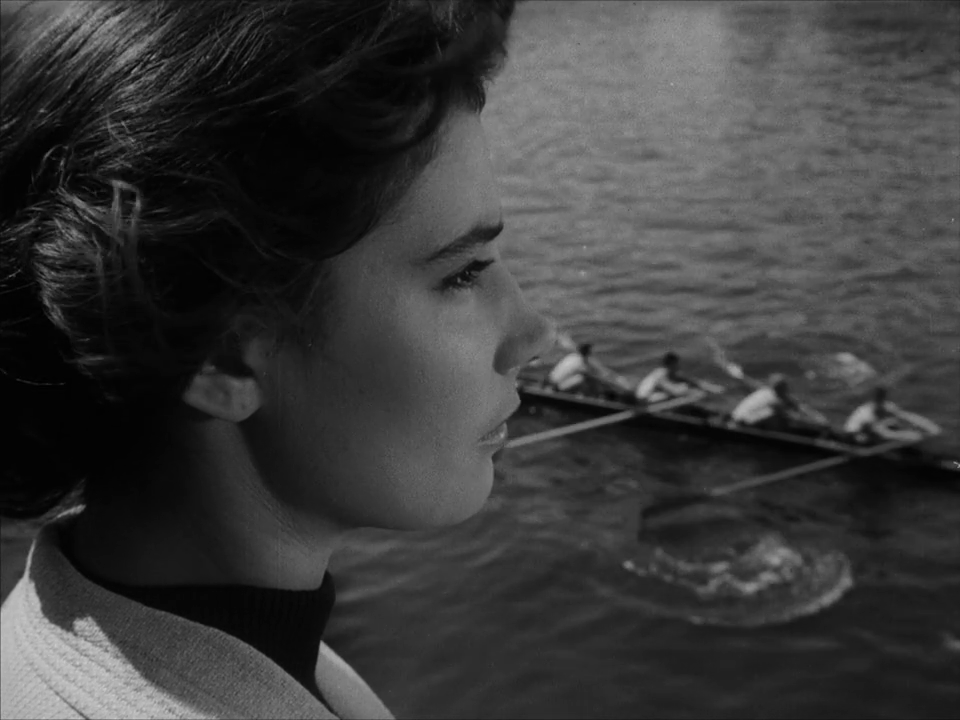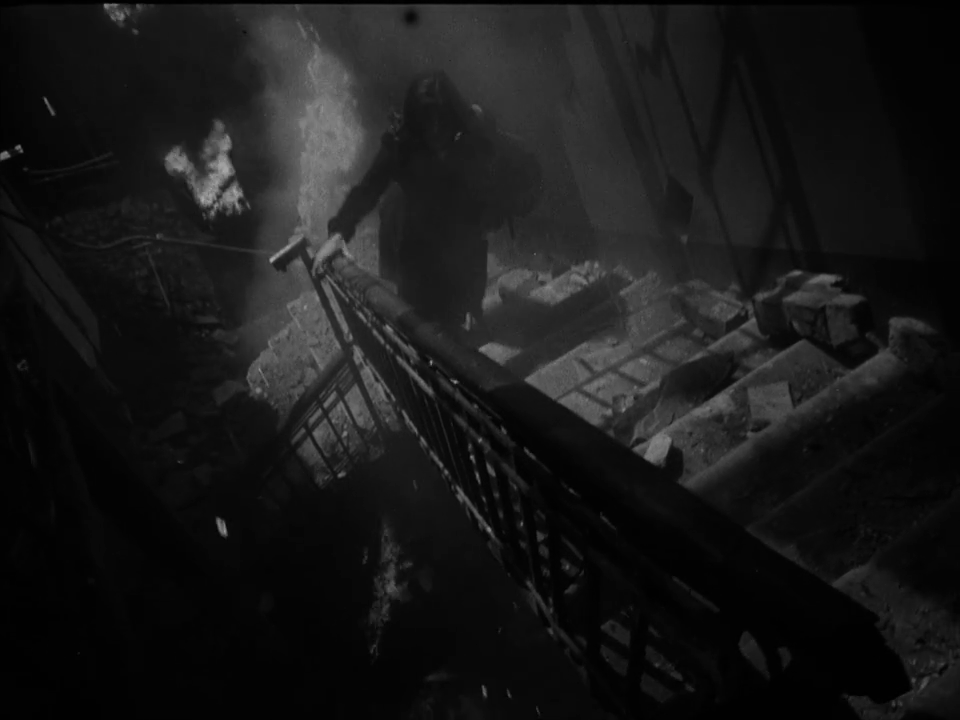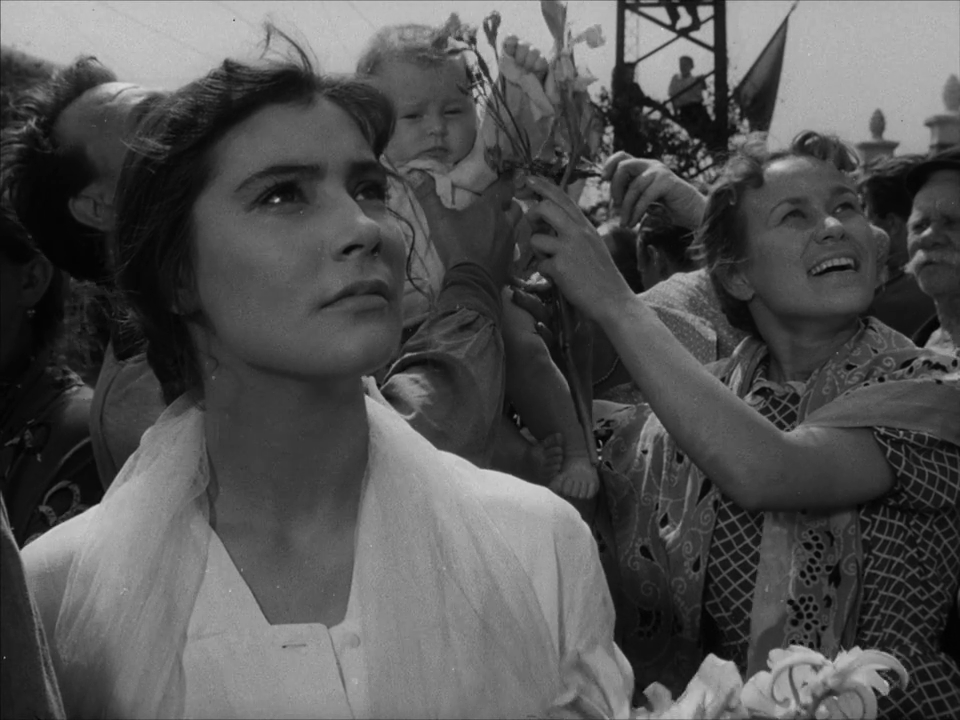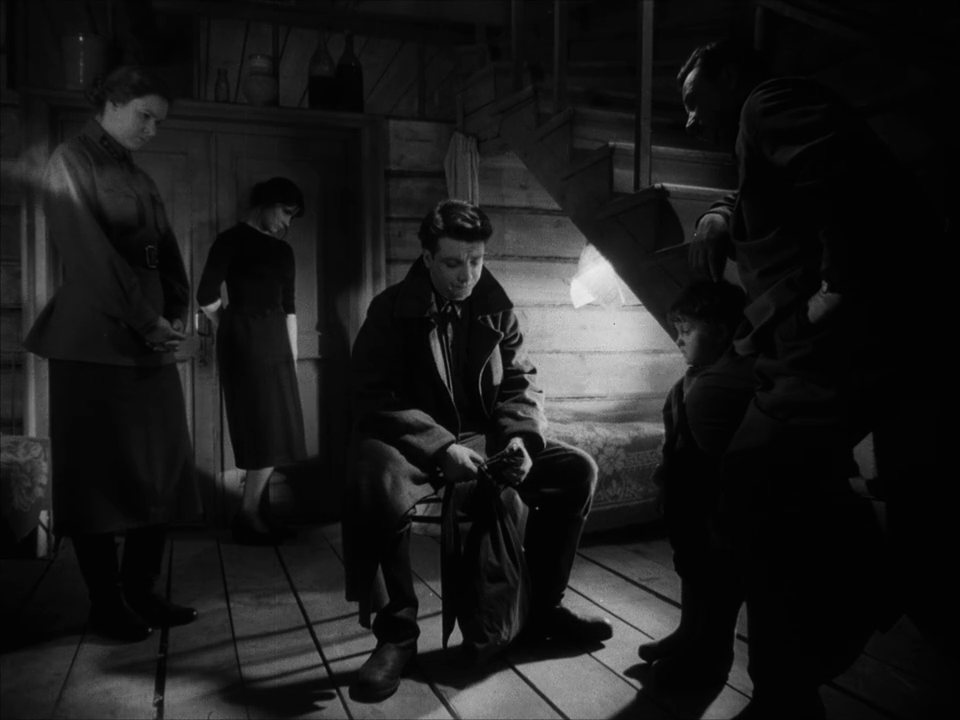Cranes Are Flying, The (1957)
“That’s what love is, my dear: a harmless mental illness.”
|
Synopsis: |
|
Genres, Themes, Actors, and Directors:
Response to Peary’s Review: He writes that “we and Batalov’s superpatriotic doctor father [Vasiliy Merkurev] sympathize with Samoylova… because she is brave, tender (she works in a hospital), and — despite her marriage — waits obsessively for her lover’s return.” Peary describes this as “the first Russian film to play in the U.S. after a cultural-exchange agreement,” noting that “it suffers” (I disagree) “whenever propaganda sneaks in and characters are induced to forget personal tragedy and realize that their future happiness will result if they play a part in Russia’s cultivation.” He points out several “powerful scenes,” including “Samoylova running up the stairs of her burning building and discovering that her apartment no longer exists”: … “Batalov being shot, looking up into the birches and fantasizing his return to Samoilova and their marriage”: … and “the terrifying seduction [rape] scene during which bombs explode, glass shatters, and wind blows.” Other memorable scenes include early moments between the carefree young lovers: … and two masterfully shot tracking sequences showing soldiers and their loved ones during departures and arrivals: As Peary writes, the “direction by Mikhail Kalatozov is emotionally charged and visually innovative,” making this a consistently engaging Soviet-era film that is still very much worth viewing. Notable Performances, Qualities, and Moments: Must See? Categories
(Listed in 1001 Movies You Must See Before You Die) Links: |








One thought on “Cranes Are Flying, The (1957)”
(Rewatch). Must-see, as a satisfying and significant film in Soviet Cinema history. As posted (today) in ‘The ’40s-’50s in Film’ (fb)
“Let one thing remain in our hearts – a cold hatred of war.”
‘The Cranes Are Flying’ (1957): This is the only Soviet film that ever won the Palme d’Or, at the Cannes Film Festival (1958). IMDb offers up significant info about the work: [When the film was released in the Soviet Union, it caused a sensation amongst audiences weaned on propaganda fare. For the first time, audiences were able to weep at the pain of losing millions of their population in the war. It was also the first time that subjects like draft dodging, war profiteering and the black market had been expressed on film.]
As well: [With the death of Stalin in 1953, the “cult of personality” that had infused many Soviet movies during his rule began to relax. “The Cranes are Flying” caused quite a stir upon its release as it deviated from that ruling.]
This film belongs to a relatively brief period of time in Russia, when artistic expression in cinema enjoyed the honesty of freedom. It is a simple, straightforward film, revealing how ordinary people react to and cope with a total and constant disruption of their lives.
‘Cranes…’ begins on June 22, 1941, with the news that Germany has invaded Russia. You’ll no doubt consider how that now stands in stark contrast to the Russian invasion of Ukraine. Perhaps you’ll think about how the Russian people are now lied to and misinformed by a madman who *knows* he is in the wrong; otherwise, why keep his own people in the dark?
Directed by Mikhail Kalatozov (‘Letter Never Sent’, ‘I Am Cuba’, ‘The Red Tent’), ‘Cranes’ is a film often startling in its imagery, effective in its framing and editing. There’s a sequence involving a vortex hallucination which, alone, makes the film worth a viewing.
Its assets, however, are considerable – not the least of which is the central performance by Tatiana Samoilova, who (due to her looks and her demeanor) put me in mind of Audrey Hepburn (not the AH who disappoints in ‘War and Peace’ but the one representing stronger stuff in ‘The Nun’s Story’).